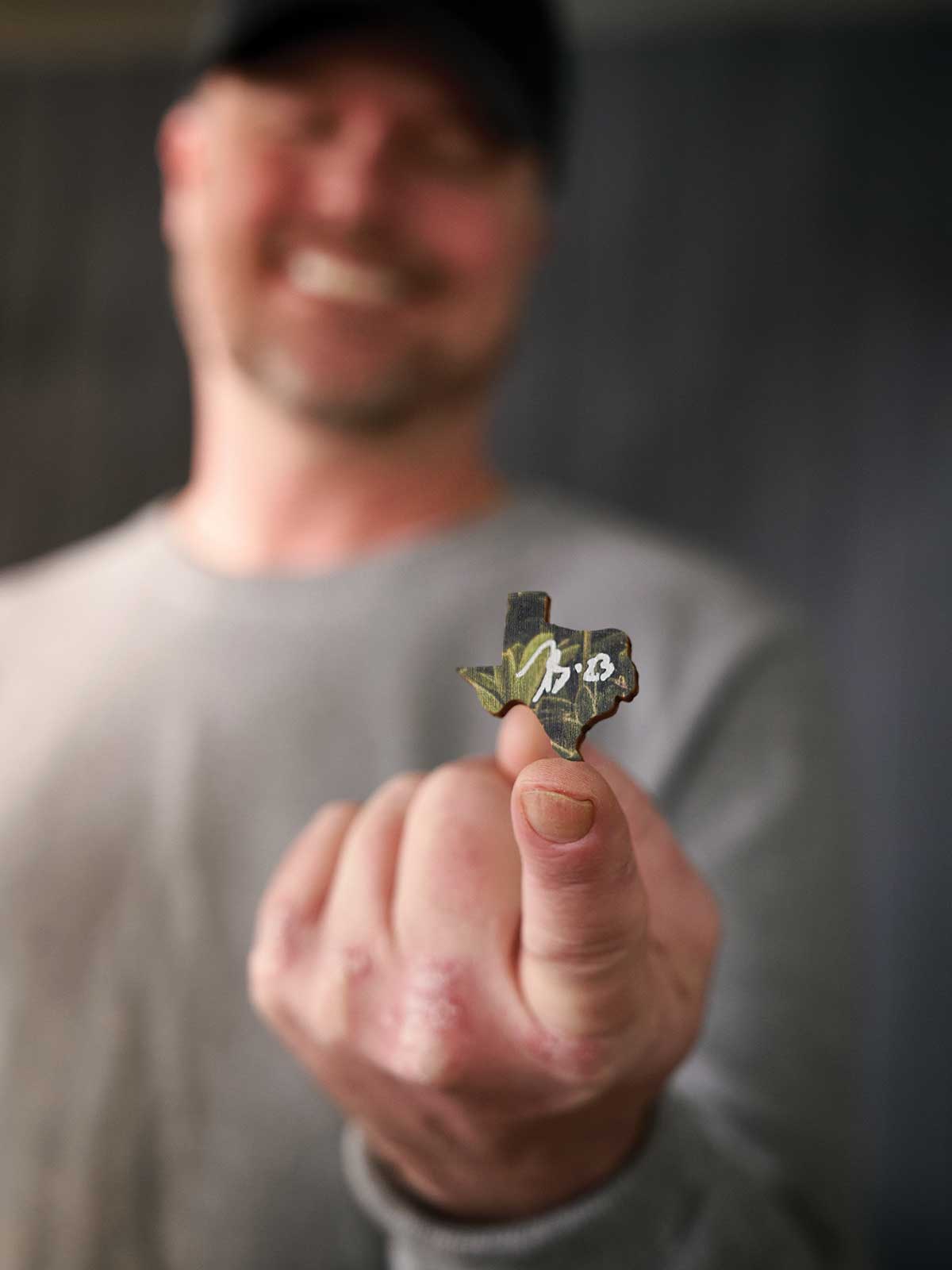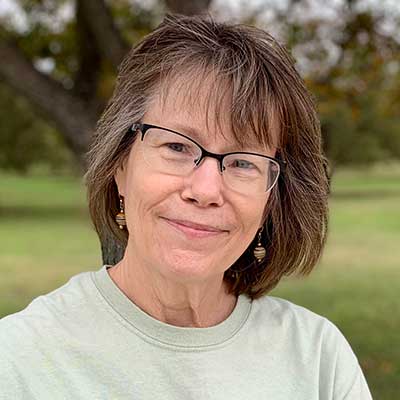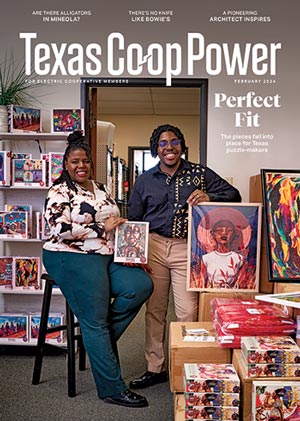Growing up, JB Manning remembers putting puzzles together with his grandmother at her home in Minnesota. “She always had a puzzle spread out on the table,” he says. “She enjoyed working on them, and they became an activity that we all did with her.”
Jigsaw puzzles have been drawing people together for centuries. Most historians credit British mapmaker John Spilsbury for creating the first puzzles in the 1760s. He pasted hand-colored European maps onto thin mahogany boards and cut them into pieces along political borders.
His “dissected” maps were marketed as educational tools to teach children about geography.
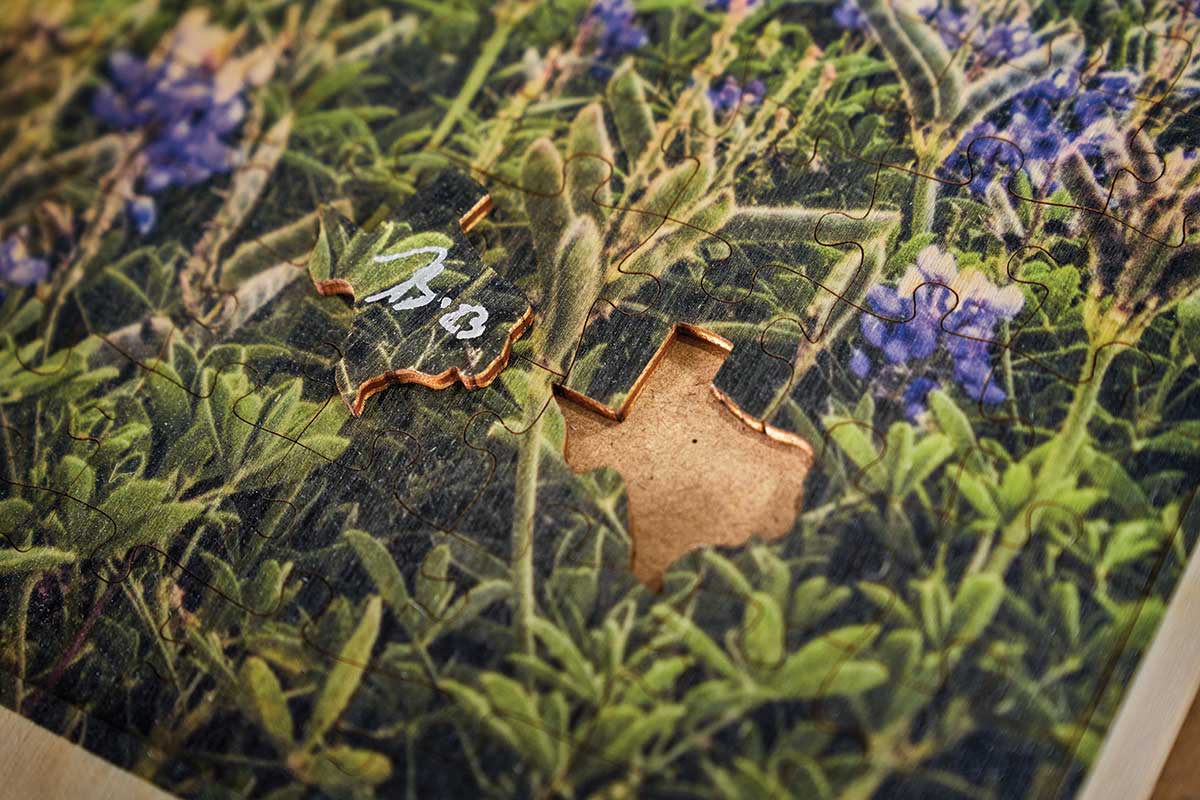
A signature of Manning’s puzzles is including pieces with whimsical shapes.
Dave Shafer
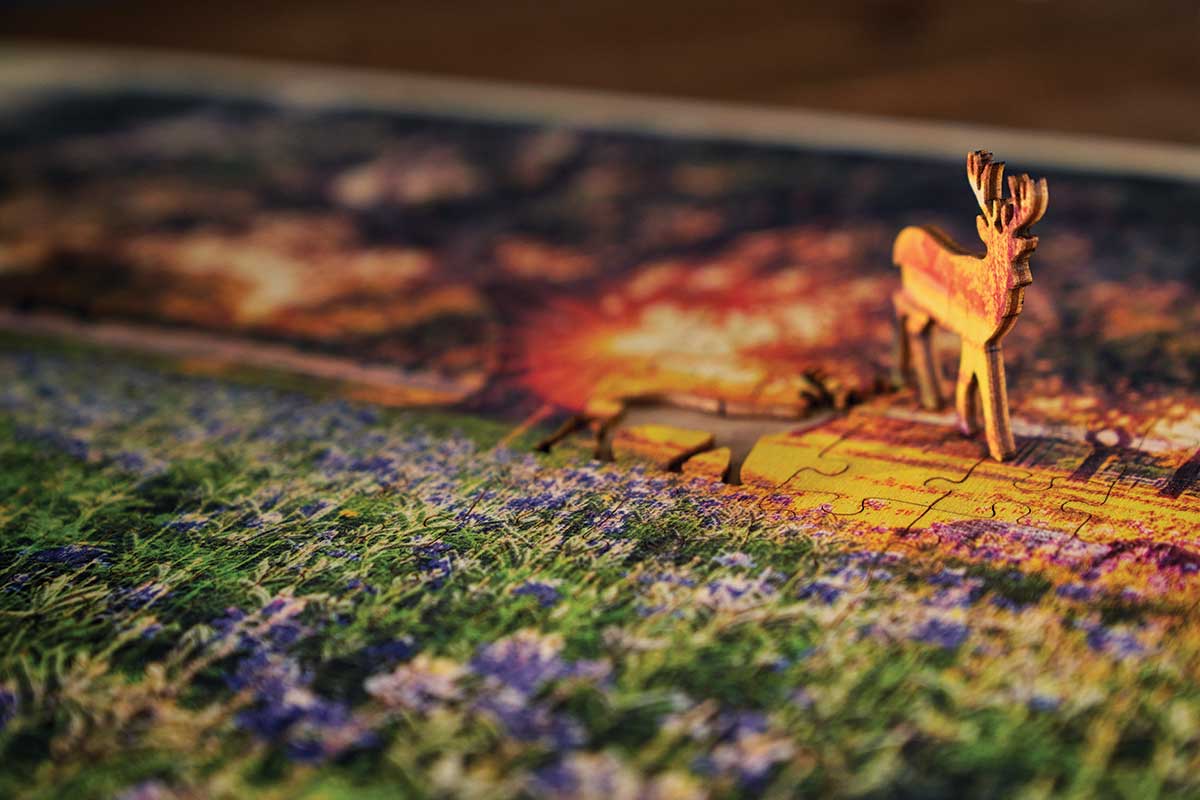
A buck-shaped piece stands out in a field of bluebonnets.
Dave Shafer
In the 19th century, dissected puzzles evolved into jigsaw puzzles, named for the bladed tool used to cut the pieces. Only the wealthy could afford to buy the handcrafted wooden creations. But as manufacturing improved, makers began to utilize plywood and then sturdy cardboard, which reduced costs and enabled mass production. Interlocking pieces were introduced to keep puzzles together.
Fast-forward to the COVID-19 pandemic, when game-makers reported in April 2020 that puzzle sales nationwide skyrocketed more than 300%. Stuck at home, people took to their kitchen tables to pass the time and relieve stress.
In Texas, two small companies have cut out their own niches with special touches that make their puzzles stand out from the ordinary.
Outside San Marcos, in Wimberley, Manning—who owns the Wimberley Puzzle Co.—often worked long hours during the pandemic to make and ship 100 puzzles a day. Orders have since returned to a daily average of 15 to 20 puzzles. The more relaxed pace suits Manning, who quit a stressful corporate job in Houston in 2011.
He then began traveling through national parks with his digital Nikon camera. While crisscrossing states in 2014, he bought a postcard, wrote on it, cut it up and mailed it in an envelope.
“Puzzle postcards were my original idea,” says Manning, a Pedernales Electric Cooperative member. “But I decided they’d be hard to sell. I got the idea about puzzles while I was sitting on an outcrop that overlooked a waterfall at Glacier National Park. I decided I’d use my own photos of places that people know, have been to or want to go.”
He moved to Wimberley in 2017 and set up his workshop. The Wimberley Puzzle Co. released its first puzzles, made of sturdy cardboard and packaged in cardboard boxes, early the next year. They featured such iconic Texas scenes as wildflowers along the Willow City Loop near Fredericksburg, Gorman Falls at Colorado Bend State Park, and Fischer Dance Hall between San Antonio and Austin.
That fall, Manning bought a travel trailer and set up a mobile workshop. He continued on the road, taking photos while making and shipping his products.
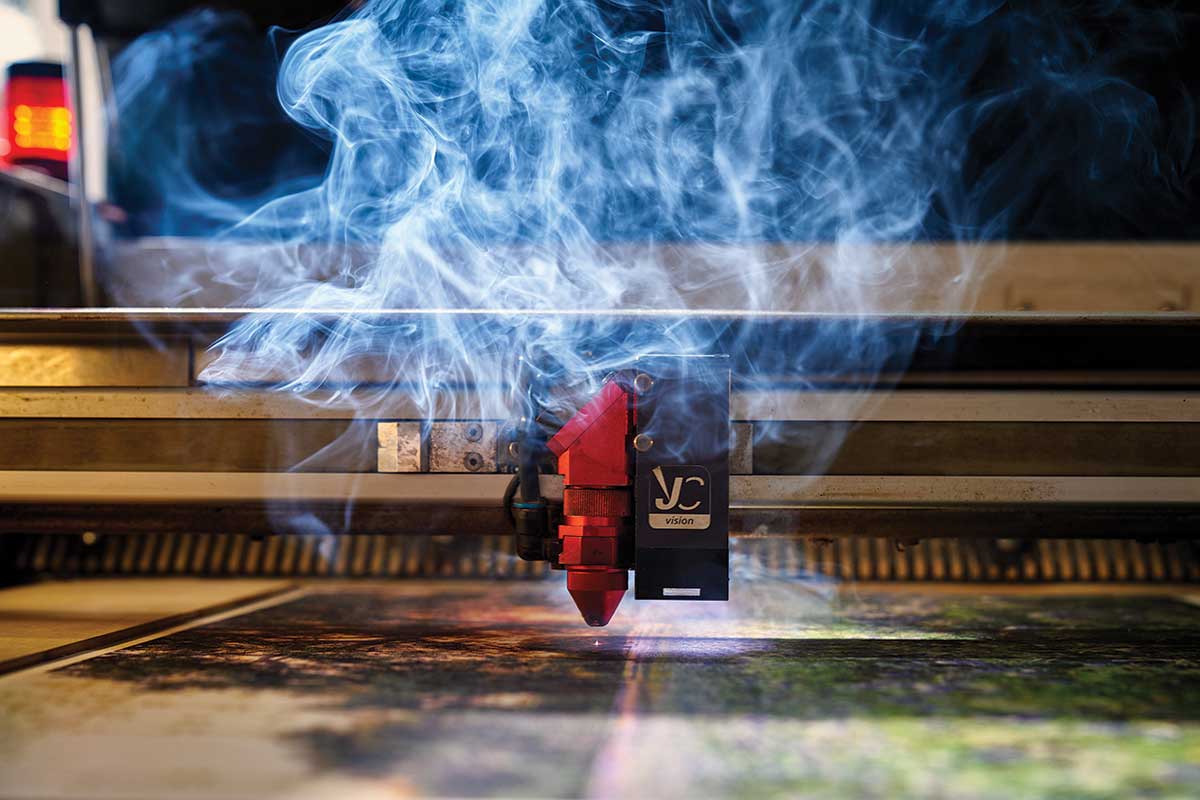
A computerized laser cutter navigates the myriad shapes of Manning’s creation.
Dave Shafer
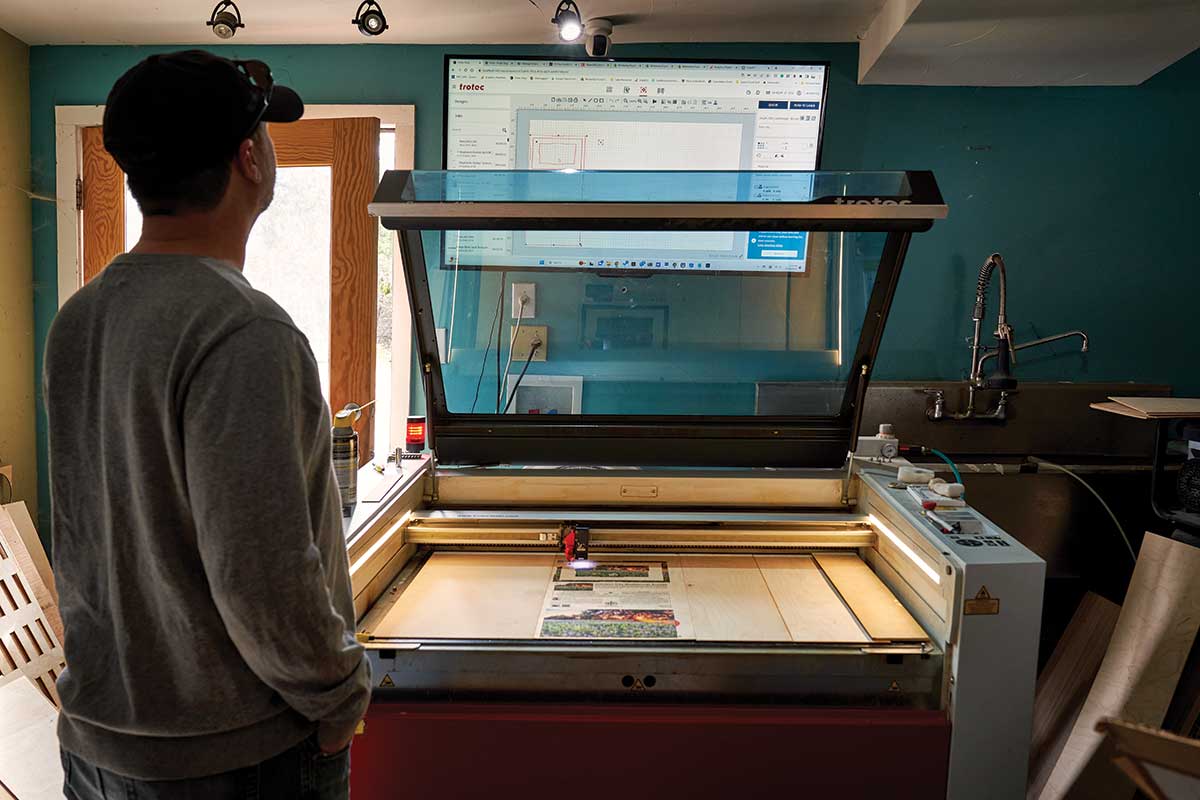
The laser also cuts the pieces for Manning’s plywood boxes.
Dave Shafer
When the pandemic closed parks, Manning returned to Wimberley. He couldn’t find cardboard when supply chains slowed to a crawl in 2021. So he transitioned to Baltic birch plywood to make his puzzles and matching boxes with sliding lids.
Today his computerized equipment includes a large-format printer and a laser cutter. The wooden puzzles, which range from 130 pieces up to 1,000, are usually made to order. His nine-page online catalog has grown to include striking scenes (and animals) from other states, national parks, Route 66 and even Africa, where he traveled in 2014.
From the start, Manning’s puzzles have included whimsical pieces that help tell the puzzle image’s story. For instance, his best-selling Bluebonnet Sunset, photographed near Navasota, between Houston and College Station, features pieces shaped like a butterfly, dove, bee, live oak and flowers. As a special touch, he always signs a piece, such as one shaped like Texas.
Manning tucks a folded envelope inside each box with information about his company and how customers can order a lost piece. He also includes a small wooden easel for displaying the box lid or glued puzzle as desktop art.
Fine art of a different kind inspired siblings Ericka Chambers of Little Elm and William Jones of Sachse—towns in the Metroplex—to tap into their roots and launch their own puzzle company.
“We grew up doing puzzles together as a family,” says Chambers, a CoServ member. “But we had a hard time finding diversity in puzzle images. Then, when I was pregnant, I wanted to decorate my nursery around a puzzle. But there were very few to choose from.”
A painting of a Black woman by artist Kwanzaa Edwards of San Antonio sparked an idea. The vibrant colors and fanciful imagery intrigued Chambers, and she suggested making a puzzle of one of Edwards’ paintings. “William thought that was a great business idea,” Chambers says.
Thus was born Puzzles of Color, which exclusively licenses and features artwork created by the siblings’ favorite Black artists as well as Native American, Latino and Asian American artists. In fall 2020, they partnered with a company to print the artwork and another to mount the pieces on cardboard.
At night, Chambers, then a product manager for Capital One, and Jones, a freelance graphic designer, would cut the boards on a roller die cutter in Chambers’ garage. Then they boxed up the puzzles. Their parents and spouses helped, too. They still do.
A big break came in January 2021, when a local news report on the company aired nationwide. Orders shot up so much that all production had to be outsourced.
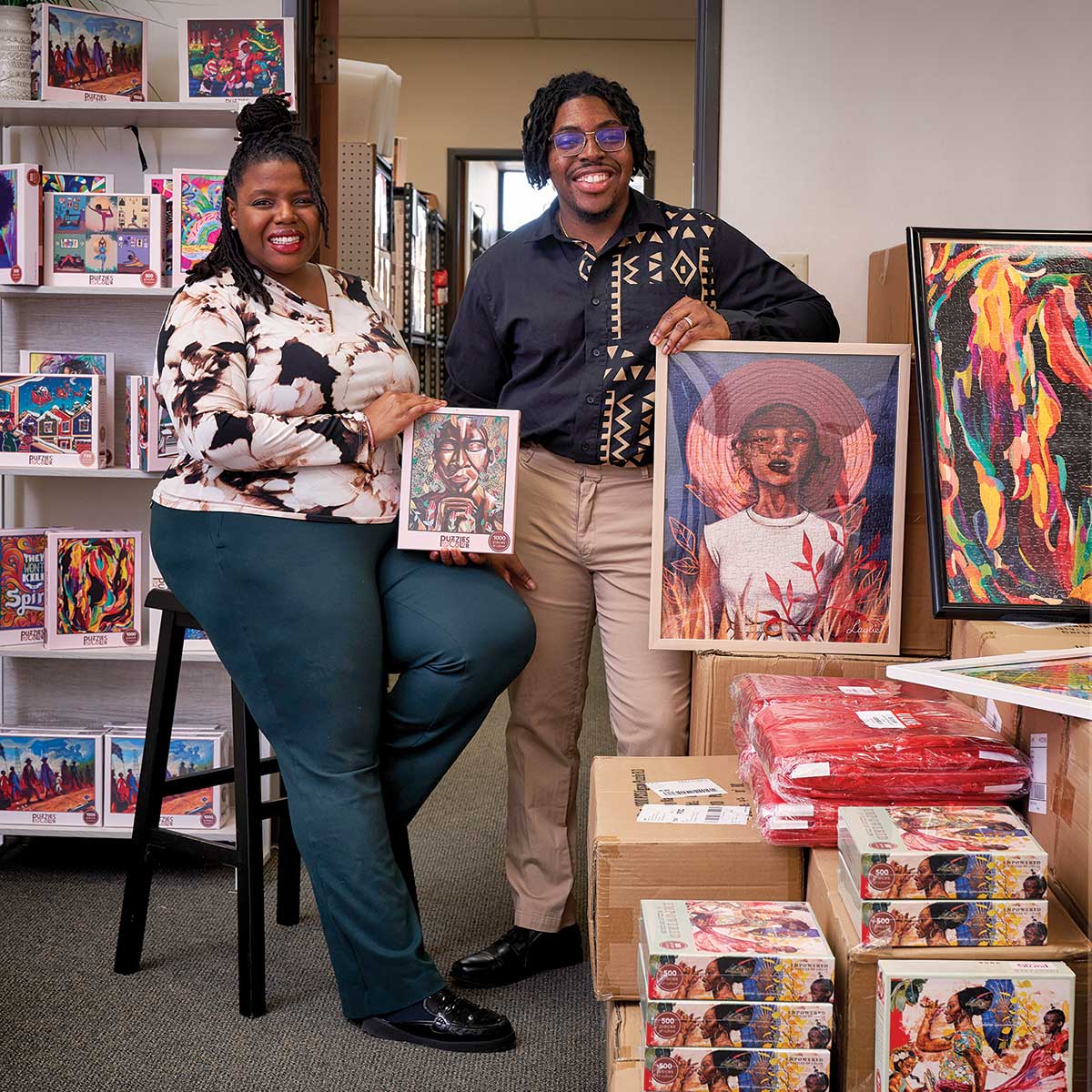
Art and puzzles fit together perfectly for Ericka Chambers and William Jones.
Dave Shafer
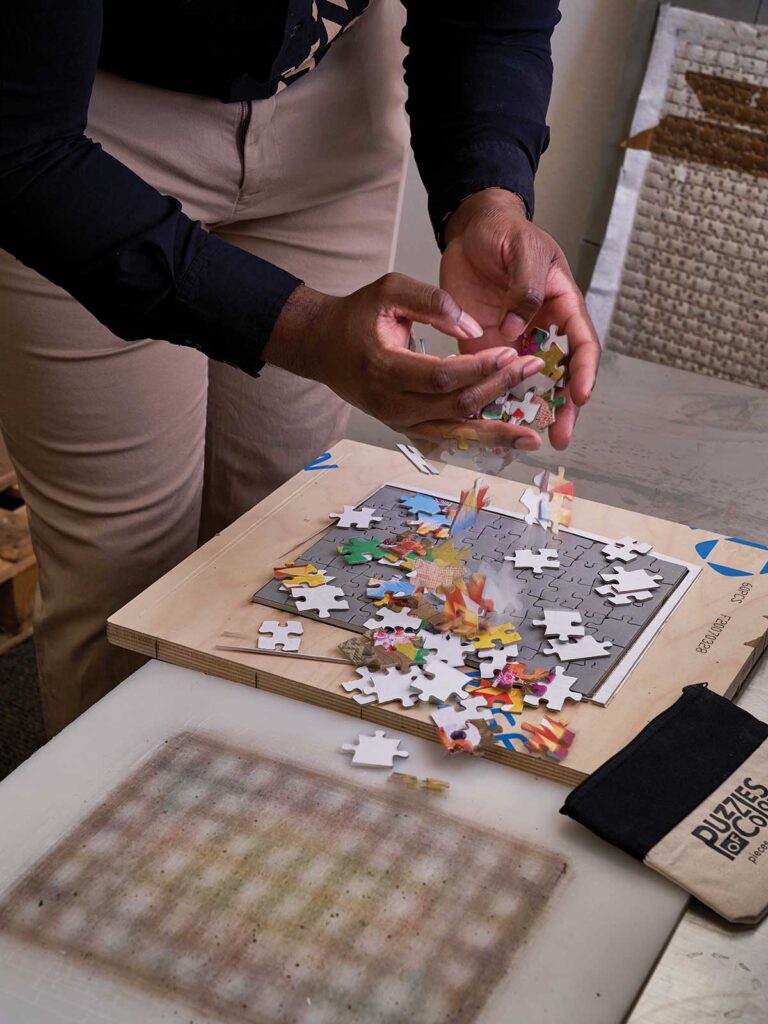
William Jones breaks up a puzzle after a die cutter did its work.
Dave Shafer
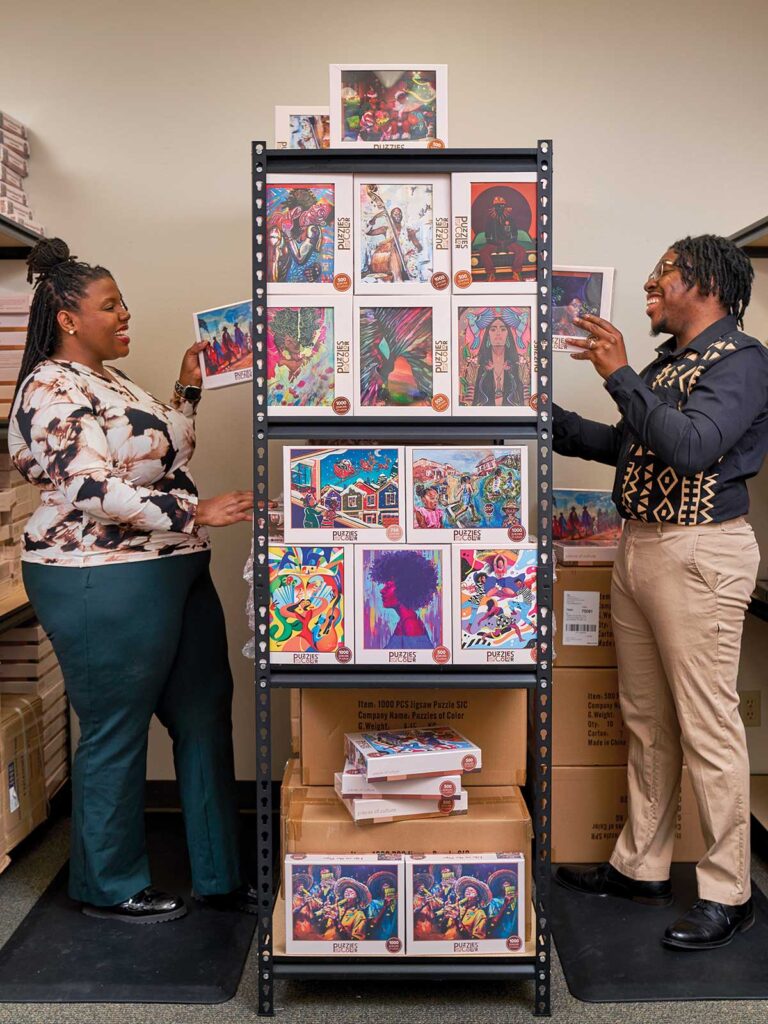
Nearly 30 artists illustrate the puzzles that siblings Ericka Chambers, left, and Jones have in stock.
Dave Shafer
Since then, Puzzles of Color has steadily grown, both in sales and merchandise. Puzzles are available online and at special events. “They’re in some boutique stores and museums, too,” Chambers says. “Last February, Target carried our puzzles during Black History Month. We’re working to be there year-round.”
So far they’ve licensed with nearly 30 artists from across the country and also Kenya to create puzzles that range from kid-friendly 20- and 60-piece jigsaws up to 1,000 pieces.
Among their first puzzles was Edwards’ dreamy depiction of a Black woman called To Be Loved. Paul Kellam of Jacksonville, Florida, depicts a Black family gathered near a Christmas tree and Kwanzaa table in his Comfort & Joy. Steph Littlebird of Las Vegas created Wapato Woman, a portrait of a powerful Native American woman.
Puzzles of Color boxes tell the company’s story and those of the featured artists.
“We also interview all our artists in a podcast so we can share their methods and how they got into art,” Chambers says. “Each puzzle has a musical playlist on Spotify with songs connected to the artist’s inspiration and what music they’re into. So as people are doing a puzzle, they can get into the artist’s mindset.
“We’ve had people tell us they don’t do puzzles,” she adds. “But they’re so enamored with the art that the experience of putting our puzzles together gives them a feeling of being an artist. And that’s cool!”
